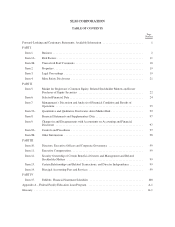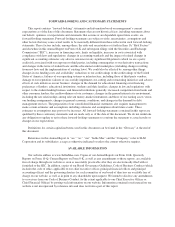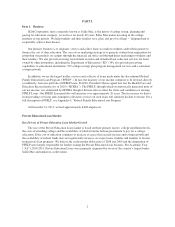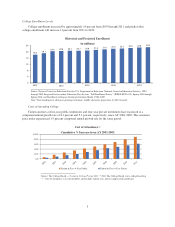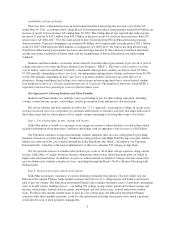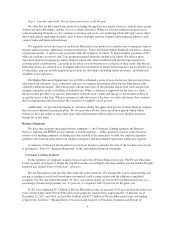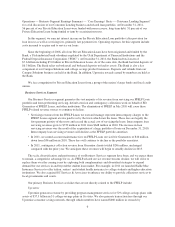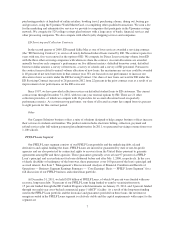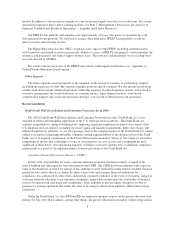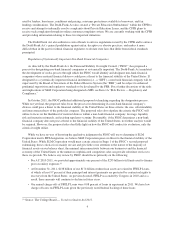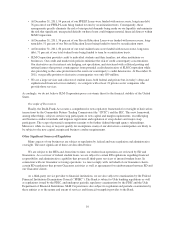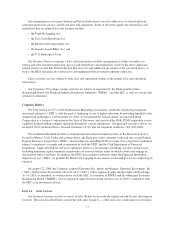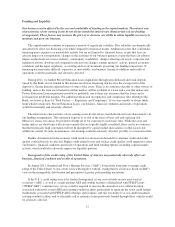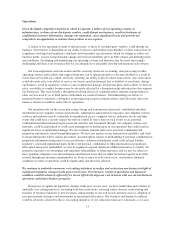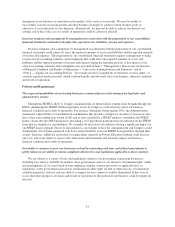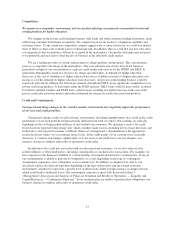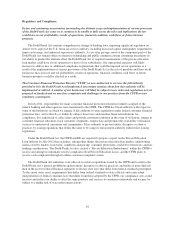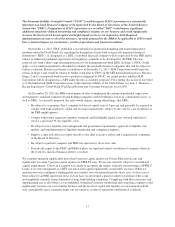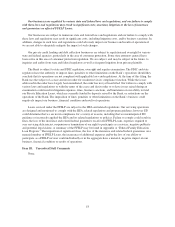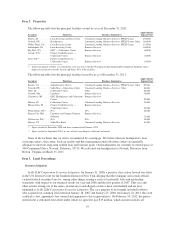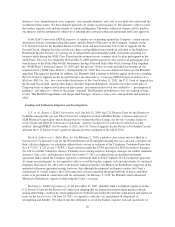Sallie Mae 2011 Annual Report Download - page 12
Download and view the complete annual report
Please find page 12 of the 2011 Sallie Mae annual report below. You can navigate through the pages in the report by either clicking on the pages listed below, or by using the keyword search tool below to find specific information within the annual report.• At December 31, 2011, 94 percent of our FFELP Loans were funded with non-recourse, long-term debt;
76 percent of our FFELP Loans being funded to term by securitization trusts. Consequently, these
arrangements greatly eliminate the risk of unexpected demands being made on our liquidity and minimize
the risk that significant, unexpected defaults on these loans could trigger material financial distress within
SLM Corporation.
• At December 31, 2011, 56 percent of our Private Education Loans were funded with non-recourse, long-
term debt; 51 percent of our Private Education Loans being funded to term by securitization trusts.
• At December 31, 2011, 86 percent of our total student loans were funded with non-recourse, long-term
debt; 71 percent of our total student loans being funded to term by securitization trusts.
• SLM Corporation provides credit to individual students and their families, not other institutions or
businesses. Our credit and market risk policies minimize the risk of credit counterparty concentrations.
Our derivatives are for interest rate hedging, not speculation, and structured with collateral posting and
netting features that protect counterparties from potential credit deterioration of SLM Corporation while
also providing us the same protection in the event our counterparty’s credit deteriorates. At December 31,
2011, our payable position to derivative counterparties was only $89 million.
• We are a large servicer and collector of student loans, both federal and private but, in today’s deep and
sophisticated financial services industry, we compete with at least 21 private sector companies who
provide those services.
Accordingly, we do not believe SLM Corporation poses a systemic threat to the financial stability of the United
States.
Oversight of Derivatives
Finally, the Dodd-Frank Act creates a comprehensive new regulatory framework for oversight of derivatives
transactions by the Commodity Futures Trading Commission (the “CFTC”) and the SEC. This new framework,
among other things, subjects certain swap participants to new capital and margin requirements, recordkeeping
and business conduct standards and imposes registration and regulation of swap dealers and major swap
participants. The scope of potential exemptions remains to be further defined through agency rulemakings.
Moreover, while we may or may not qualify for exemptions, many of our derivatives counterparties are likely to
be subject to the new capital, margin and business conduct requirements.
Other Significant Sources of Regulation
Many aspects of our businesses are subject to regulation by federal and state regulation and administrative
oversight. The most significant of these are described below.
We are subject to the HEA and, from time to time, our student loan operations are reviewed by ED and
Guarantors. As a servicer of federal student loans, we are subject to certain ED regulations regarding financial
responsibility and administrative capability that govern all third-party servicers of insured student loans. In
connection with our Guarantor servicing operations, we must comply with, on behalf of our Guarantor clients,
certain ED regulations that govern Guarantor activities as well as agreements for reimbursement between ED and
our Guarantor clients.
As a third-party service provider to financial institutions, we are also subject to examination by the Federal
Financial Institutions Examination Council (“FFIEC”). The Bank is subject to Utah banking regulations as well
as regulations issued by the FDIC, and undergoes periodic regulatory examinations by the FDIC and the Utah
Department of Financial Institutions. SLM Corporation is also subject to regulation and periodic examination by
these entities as to the nature and extent of services and financial strength it provides to the Bank.
10


